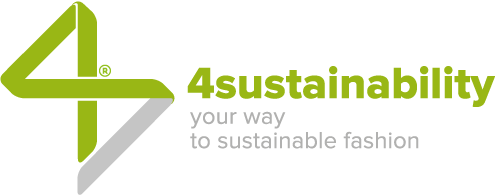Sustainability has become a buzzword over the years. All the indicators tell us that the future belongs to companies authentically committed to sustainability meant in its three key-dimensions: environmental, social and economic-organizational. The critical point consists in that authenticity component we don’t always find in the communication of projects and initiatives “sold” as sustainable: one thing, indeed, is to do and communicate, another is to communicate and that’s it, with relevant encroachments in the so-called greenwashing.
Well, given that the premise for communicating sustainability is the truthfulness of data, which in turn is based on the possibility of measuring them according to shared standards, how can one take advantage of one’s ethical commitment by enhancing it in the eyes of stakeholders?
BEING SUSTAINABLE IS NOT A MARKETING INITIATIVE
There are still too many companies that think they are sustainable because they install photovoltaic panels on the roof of their factories, give a donation to some humanitarian association or launch a capsule collection of garments made with recycled raw materials.
The still prevailing trend of assimilating sustainability to environmental protection is equally inappropriate because it limits the innovative and disruptive scope that a transversal approach to sustainability can offer in terms of reviewing processes and products, up to become a real competitive advantage.
All the more reason, being sustainable cannot be reduced to a marketing operation or a declaration of intent to be included in the company profile. It’s a business strategy that affects the entire organization and often requires a radical transformation of business models.
INFORMING VS PERSUADING
Another idea to dispel is that sustainability communication is a spin-off of classic commercial communication, whose goal, at best, is to convince in order to induce a purchase. In the case of sustainability communication, the aim is instead the information or even the dissemination of a new culture and new consumption models both focused on reliability.
This mission can only be founded on truthful messages, which in turn are based on real, measurable and verifiable data and performance. On paper, truth is something that should always be communicated, but the emphasis of commercial communication we know well and tend to forgive is simply inadmissible when communicating sustainability.
The purpose of the company which, by adopting an integrated sustainability strategy, informs its stakeholders of this, obviously remains to achieve returns in terms of reputation and therefore a competitive advantage. But the affinities with traditional communication stop there: techniques, styles and mechanisms used are different.
CREATIVITY, SIMPLIFICATION, ENGAGEMENT
To recap, sustainability can only be communicated when the commitment is real and carried out through concrete and coherent initiatives and projects, which involve the environmental, social and economic-organizational dimensions. Communication therefore takes place at the end of a complex conversion process. And this complexity must be translated in order to be understandable to customers and consumers. There are no shortcuts: it is necessary to attract and engage the audience starting from a mapping as precise as possible of one’s interlocutors.
Creativity plays an essential role. In fact, a winning communication of sustainability is that which, by exploiting the power of imagination, ideas and tools selected consistently with the goal to be achieved, manages to transmit reliable, clear, accurate and consistent messages.
The communication of sustainability cannot be limited to messages such as “my fabric / my company is green”. It must demonstrate what it says, it must argue it, it must aim to insert it into the value system of its reference stakeholders.
Creativity should not be used to scream or bewitch, but to support the content by making it understandable and captivating to very different interlocutors. The challenge is to make complex concepts easier (but not simplistic) for generalist publics and to deepen the same concepts at the highest level for more specialized publics.
Another difficulty is finding the right balance between the accuracy of the storytelling on a scientific basis – which obviously has the advantage of protecting the company from accusations of greenwashing – and a lighter but still authentic narration, which can be appreciated even by non-experts.
GREENWASHING AND SOCIALWASHING
What is meant by greenwashing and what are the related risks? Doing greenwashing – or socialwashing, which is an analogous term of more recent coining applied to social – basically means boasting green or sustainable strategies without actually putting them into practice. This could have worked, until a few years ago, but customers, consumers and other stakeholders have become more savvy over time thanks to the easy access to information and the ability to make comparisons.
Communicating falsehoods, today, can turn out to be a boomerang with devastating effects and negative repercussions on the reputation and reliability not only of the company directly responsible, but also of the supply chain it belongs to. The opportunistic communication of sustainability, in other words, contributes to lowering the credibility of an entire system, generating criticism and skepticism reactions in the public that are accelerated and amplified by sharing on social networks.
SUSTAINABILITY COMMUNICATION IN 6 WORDS
We can summarize the major features of an effective communication of sustainability in six key words.
Substance
The truth first of all. And the truth of being sustainable relies on results and data. Without these kinds of indicators, any proof of communication is nothing more than misleading advertising.
Transparency
Saying things as they are means not keeping silent about anything. Never mind if some sustainability performances are not exactly exciting. Paradoxically, admitting one’s limits and delays gives greater credibility to good results as well.
Continuity
A commercial initiative is not enough for a company to be called sustainable: a development plan is needed that involves the company at all levels. Similarly, sustainability communication must respond to an organic strategy to be pursued over time with consistency and continuity. An isolated message, however well conceived, is not worth the effort.
Understatement
The more serious the topic, the more risky the slogans for their own sake. When the theme is sustainability, self-referentiality, strong tones or a marked advertising language do not pay. Elegance and a sense of proportion, on the contrary, always prove to be an excellent idea.
Balance
The secret of effective communication of sustainability is in the right balance between technicality and emotion, which must be appropriately dosed according to the target to which we address. It’s the subtle art of telling a truth made up of numbers and data, making it pleasant as well as interesting.
Coherence
Missteps are around the corner and can cause damage of no small relevance. If you organize a fashion show-event to present a sustainable collection, for example, pay attention to “details” such as the use of virgin paper for invitations or excessive energy consumption.

